MALACHITE
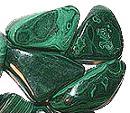
 Characteristics of the mineral.
Characteristics of the mineral.
Carbonic salt of copper Cu2CO3 (OH) 2. In Russia, it has always been considered a precious stone, although in the Urals it was quite a lot. Today the deposits of the Ural malachites are practically exhausted. Most often, malachite is observed in the form of crusts, spherical crystals, kidney-like masses, infiltrating kidney-like aggregates of radial-radiant, parallel-columnar and zonal-concentric structure. Therefore, typical concentric patterns are visible on the slices of malachite. The shades of malachite vary from turquoise, emerald green and bluish green to green-black. Today much malachite is delivered to the market by Africa (Zaire, Namibia, pictured right). This is a valuable ornamental kaamen. Malachite is used in different countries since antiquity. Malachite is associated with many legends and myths (the Mistress of the Copper Mountain in the Urals, in India it was believed that he can make a person visible, cleanse of grievances and anxieties).
Malachite is one of the most beautiful minerals. Its coloration is a palette of green tones from light green with blue (turquoise) to a dense dark green color. The texture of malachite is diverse - ribbon, jet, concentric-circular, radiant-stellate with alternating layers of different colors. Its color is explained by the presence of copper ions. It is formed as a result of the interaction of copper sulphate solutions with carbonate or carbonic waters. Bleak forms of malachite arise in karst caves and cavities of ore-bearing limestones, where water is filtered with copper bicarbonate. Malachite is found in the form of dense, edentulous formations, earthy excretions. Crystals of malachite are extremely rare. The line of malachite is pale green. When heated, malachite loses water and turns black.
In the State Hermitage there is a malachite hall, in which more than a hundred different products from this precious mineral are exhibited: huge vases, bowls, tables, powerful columns - all of them seem to be made of a whole piece of malachite, the pattern of stone patterns is so exact. Currently, products made of malachite - beads, brooches, rings, pendants - are valued on a par with semi-precious stones and are in great demand. Moreover, malachite is constantly becoming more expensive. The price increase for this popular stone will continue. Malachite from the Urals is considered the most valuable in the world market, but its deposits are completely scooped out. By the color and beauty of the patterns, the malachite of foreign deposits in Zaire, southern Australia and the United States can not be compared with the Urals, but it is also very beautiful.
Crystals of malachite are the thinnest needles, they almost never grow one by one. Growing out of the center, these needles create radiant spheres - spherulites. Usually in every cracks, in each void of such spherulites there are many. Feeling squeezed, squeezing each other, creeping one on top of another, they merge into whimsical clustiform or kidney-shaped fusions. Copper solutions that feed growing buds contain more copper, then less - and each of the newly growing layers becomes darker and lighter. It is copper that stains the mineral in green. It is easy to imagine that the intricate patterns of malachite arise when we cut this lobed or rounded hemispheres kidney along and across. In places where the needles grew quietly, the spherulites are distinct and the malachite will be silky, and where the content of copper in the solution varies more often, the layers are thin, the buds are dense and the needles are not visible at all, but the concentric banding of the complex pattern clearly appears.
Malachite is actively synthesized, inexpensive products from synthetic malachite are widely used for sale. However, in terms of beauty and elegance of synthetic stone, malachite can not compete with its natural counterparts and is much cheaper. Brown and alternating green layers of dirty shades are found only in synthetic malachite. In addition, synthetic malachite appears dimmer. For identification, you need to remember the color and patterns of natural malachite.
Magic properties of stones.
Malachite is an excellent talisman for children, as well as their amulet: it gives children complaisance, develops curiosity in them, gives talents, that is, facilitates their discovery. The best stone should possess numerous curls, like lambs on the water or creepers of bindweed (Ural malachite has such a structure), and generally to remind both the color and the "composition" of the greens - soft and beautiful. This is a talisman of people who are not very lucky in life, who seem to lack happiness, without which a person becomes melancholy and sad. Malachite is an amulet of wise people, who warns and warns them, people who are able to listen to advice and draw conclusions from microscopic remarks. Malachite attracts people to his master, so he is the mascot of the lonely. It is also a magic stone, a stone of alchemists, and it requires constant communication with its master. It is good for writers, artists, journalists, travelers, for all who need to behave properly in any situation: malachite contributes to the purification of emotions, enlightenment of perception, peaceableness. A stone of harmony and love. The energy of the stone is very strong. Has strong energy and promotes emotional excitability. Strengthens the spiritual strength of its owner, thanks to which it was willingly carried by people of science. Brings good luck in business, health and success in love.
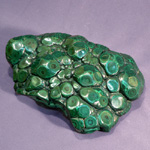
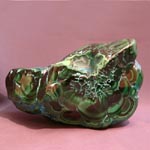
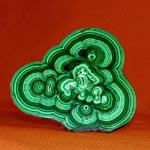

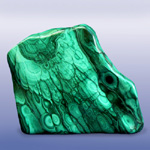
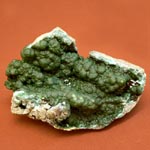
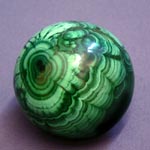

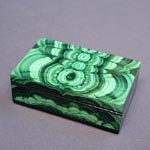

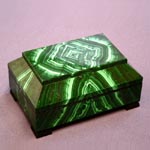
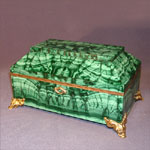

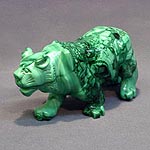
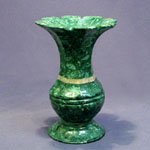
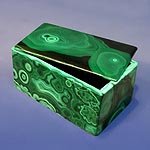
Poisonous and radioactive dangerous stones and minerals
** - poisonous stones and minerals (mandatory check in the chemical laboratory + explicit indication of toxicity).
** - radioactive stones and minerals (mandatory check on the standard dosimeter + ban on open sales in the case of radioactivity over 24 milli / g / h + additional measures of population protection).
All rare stones are subject to mandatory inspection at the standard dosimeter for the permissible level of radiation and in the chemical laboratory for the absence of poisonous and evaporating components that are dangerous to humans and the environment.


Comments
Commenting on, remember that the content and tone of your message can hurt the feelings of real people, show respect and tolerance to your interlocutors even if you do not share their opinion, your behavior in the conditions of freedom of expression and anonymity provided by the Internet, changes Not only virtual, but also the real world. All comments are hidden from the index, spam is controlled.